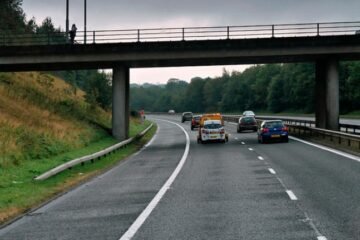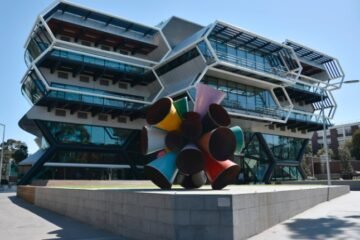A climate activist who glued himself to the frame of John Constable’s The Hay Wain and taped posters on it has been sentenced to six months in prison for criminal damage. Eben Lazarus, 28, was one of two members of Just Stop Oil who targeted the famous painting at the National Gallery in London on 14 October 2023.
A ‘shock’ sentence for a peaceful protest
Lazarus, a software engineer from Bristol, pleaded guilty to causing £10,000 worth of damage to the 19th-century masterpiece, which he said was part of a peaceful protest against the oil industry. He told Westminster Magistrates’ Court that he had made “a deliberate effort” to avoid damaging the painting itself, and that he was motivated by “a sense of urgency and desperation” over the climate crisis.
However, District Judge Alexander Jacobs said Lazarus had shown “a complete disregard” for the painting and the public, and that his actions were “an attack on our cultural heritage”. He said the sentence was intended to deter others from similar acts of vandalism, and that Lazarus had “crossed the line” between legitimate protest and criminality.
Just Stop Oil: A new climate group causing disruption
Just Stop Oil is a new climate group that emerged in early 2023, out of frustration with the outcomes of the COP26 summit in Glasgow and the government’s decision to expand oil and gas production in the North Sea and lift the ban on fracking. The group claims to be “a non-violent direct action movement” that aims to “stop the flow of oil and gas into the UK”.
Since April 2023, Just Stop Oil activists have staged protests at various oil facilities across the country, blocking roads, tankers and pipelines, and causing hundreds of arrests. They have also disrupted sporting events, glued themselves to public buildings and monuments, and thrown tomato soup over Vincent van Gogh’s Sunflowers at the National Gallery.

The group says its protests are not meant to change people’s minds about climate change, but to raise awareness and put pressure on the government and the oil industry. A spokesperson for Just Stop Oil, Emma Brown, told Sky News: “We’re causing visible disruption in our capital city. Disruption works because it puts pressure on the police, which puts pressure on the government.”
The Hay Wain: A symbol of British landscape art
The Hay Wain is one of the most famous paintings by John Constable, a British artist who is widely regarded as one of the greatest landscape painters of all time. The painting depicts a rural scene in Suffolk, where Constable grew up, and shows a hay wagon crossing a river on a summer day.
The painting was completed in 1821 and exhibited at the Royal Academy the following year, where it received little attention. However, it became popular in France, where it was praised by critics and artists for its naturalism and originality. It was bought by a French collector in 1824 and returned to Britain in 1828, where it gradually gained recognition as a masterpiece of British art.
The painting is now part of the permanent collection of the National Gallery, where it is one of the most visited and admired works. It is considered a symbol of the British countryside and its cultural heritage, and has inspired many artists and writers over the years.
The National Gallery: A target for art attacks
The National Gallery is one of the most prestigious and popular art museums in the world, housing a collection of over 2,300 paintings from the 13th to the 20th century. It is located in Trafalgar Square, in the heart of London, and attracts over six million visitors a year.
However, the gallery has also been a target for several art attacks in its history, ranging from political protests to personal grievances. Some of the most notable incidents include:
- In 1914, suffragette Mary Richardson slashed Diego Velázquez’s Rokeby Venus with a meat cleaver, as a protest against the arrest of Emmeline Pankhurst.
- In 1987, Robert Cambridge shot at thirteen paintings, including works by Rembrandt and Monet, claiming he was acting on behalf of God to avenge the mistreatment of the Palestinians.
- In 2012, Wlodzimierz Umaniec defaced Mark Rothko’s Black on Maroon with black paint, stating that he was a member of an artistic movement called Yellowism.
- In 2018, Keith Gregory threw red paint over Thomas Gainsborough’s Mr and Mrs William Hallett, also known as The Morning Walk, claiming he was angry with the gallery’s security staff.
The gallery has taken various measures to protect its artworks from damage, such as installing glass panels, increasing security guards, and banning selfie sticks. However, it has also faced criticism for being too restrictive and elitist, and for failing to engage with the public and the contemporary art scene.


















